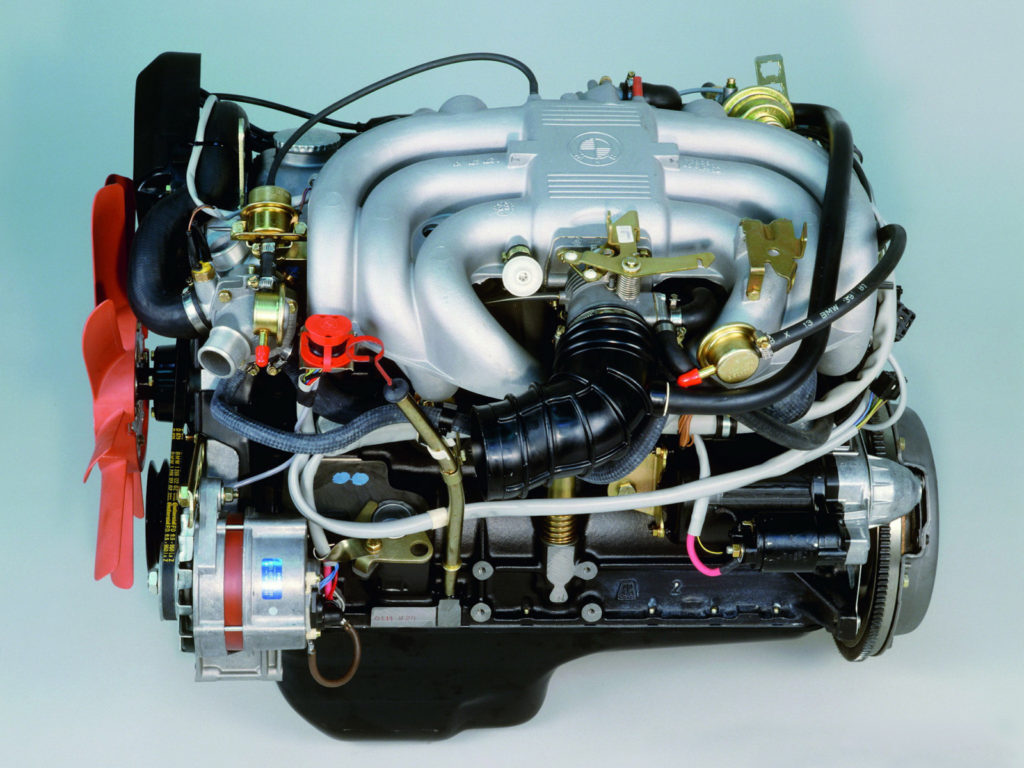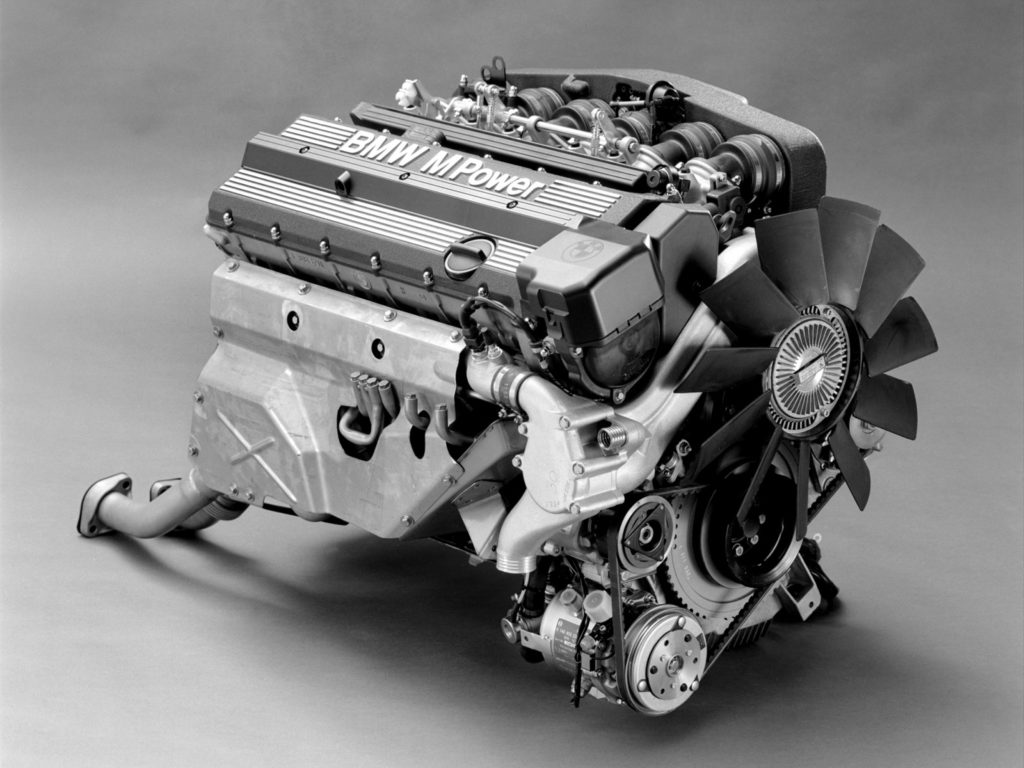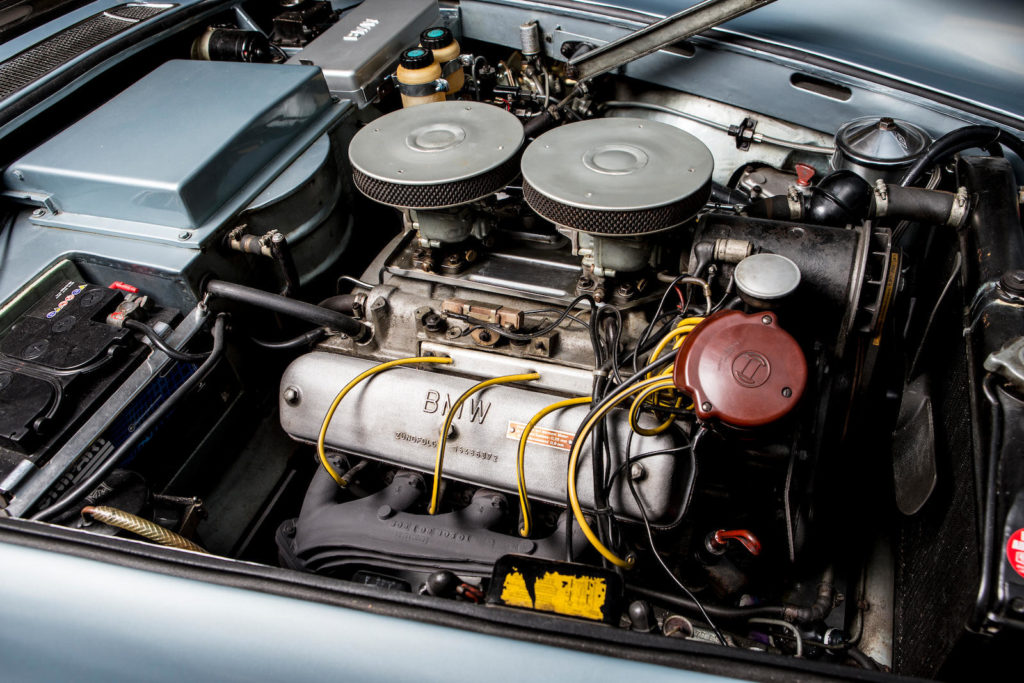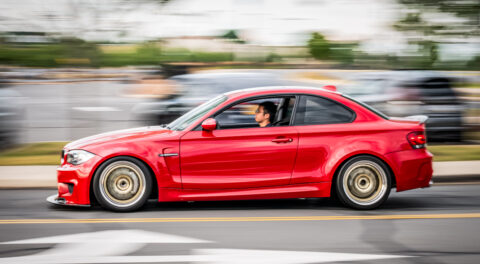Among others that have risen to prominence more recently, one of BMW’s most important core competencies as an automaker and a global brand is its ability to design and build some of the best engines in history. The heart of any BMW, including the modern variety that are moved by turbocharged and direct-injected power plants, is its source of motivation, and there’s no question that the various designs and generations of engines produced by the firm have played a large role in what makes these cars so great in nearly any form.
Back in October, we published a rundown of our favorite modern BMW engines, which are responsible for instilling a bit of soul into an otherwise highly computerized and automated experience. This time, we’re going to explore some of the engines and their various derivatives which helped put BMW on the map as a producer of fun-to-drive, practical, sporty and reliable cars that one could wrench on themselves with enough research, preparation and determination. The celebrated 2002 was and remains great because of the spritely two-liter SOHC four recognized as the M10, while the E30 3 Series made massive headway in the U.S. for BMW as a brand thanks to its use of a six cylinder in all but the most spartan of models. Throw twin camshafts and individual throttle bodies into the equation, and the fun-revving mills become potent competitors on track, driving more than a few famous BMWs and their drivers to victory over the decades, making their presence known through a distinct shriek at high rpm and some downright incredible horsepower numbers.
5. M20

Developed during the early to mid 1970’s, the M20 was initially released to the market in 1976 under the hood of E12 520/6 which was motivated by a two-liter, carbureted version which made 121 hp at 6,000 rpm and 118 pound-feet of torque at 4000. Created to fill the void between the M10 four cylinder and larger M30 which was still being made in 2.5-liter form at the time, the M20 had a shorter production run than other BMW engines, but helped embody what the automaker had to offer in terms of a torquey but smooth running six that felt good whether idling or being spun up to the 6,400 rpm rev limiter.
By no means the first inline six made by BMW nor the most ubiquitous, the M20 still captures a distinct facet of our appreciation for the marque, and can be found in a variety of states under the hoods of many modern classics, by and large E30s, today. In the U.S., the M20 debuted as M20B27 eta engine which can be found within a 528e, 325e or 325es. As the designation indicates, this variation displaces 2.7 liters making it the largest M20 manufactured, but was actually designed to offer low-revving torque to comply with stringent American emissions standards which had previously prompted to the use of stifling devices such as thermal reactors. The eta uses Bosch Motronic which was updated through production, and makes approximately 121 hp at 4,250 rpm with 170 pound-feet of torque at 3,250 when fitted with a catalyst—nearly as much twist as the stablemate M3’s S14B23 offers. Redline arrives quickly though, with the rev limiter and fuel cut occurring at a diesel-reminiscent rpm level of 4,750. The late 1980’s saw the introduction of the M20B25 for U.S. shores, even though the engine had initially been released for 1985 elsewhere. This version, designed to a more conventional BMW standard, can be revved out to 6,500 rpm in stock form, and develops 168 hp at 5,800 and 164 pound-feet of torque at 4,300 when fitted with a catalytic converter.
Today, the M20 still comes with large original and aftermarket support, and over the past several years, more than a few individuals have proceeded to fit velocity stacks to theirs, along with combining an eta block with a more rev happy head to create their own version of the obscure factory-made super eta. Although they’re among the only BMW engines to ever use a timing belt as opposed to a chain, longevity is also quite respectable so long as basics like adjustment of the SOHC, twelve-valve head and the like are not ignored. With all of that in mind, it’s not uncommon to see an M20 with more than a quarter of a million miles on it still being put through its paces on a reliable and enjoyable daily schedule.
4. M30

Easily among the most ubiquitous BMW engines ever produced, the M30 has good reason for hanging around so long. Although not the first postwar BMW inline six—that designation belongs to the M337 which was actually derived from a dated prewar architecture—the M30 still enjoyed one of the longest production runs in the company from 1968 until 1994, and was upgraded and refined substantially over the years. For a good number of years, if you were in the market for a BMW with six cylinders, the M30 was what you would receive.
The most powerful versions of the M30 arrived in the late 1970’s and late 1980’s in the form of the M90, which actually uses block of the M88 race-derived twin-cam six cylinder—more on that later—and the swan song M30B35 which seems to offer an idle smoother than any previous iteration. Nonetheless, just about every version responds well to tuning by way of opening things up with a less restrictive exhaust, and the addition of more, higher performing carburetors. Over the past 50 years, the M30, which began life as a 2.5-liter, has been bored and stroked to over four liters in a few select instances, and was offered with fuel injection starting in 1971. In addition to naturally aspirated performance modifications, the platform also proved a good basis for turbocharging in a variety of forms, from the in-house M102 and M106 used in the E23 745i (sans South Africa which received the M88 thanks t0 a right-hand drive layout), to the incredibly potent power plant of the Alpina B10 Biturbo which was developed at a staggering cost in-period.
As one might expect given the evolutionary changes and many different variations with which the M30 was built, output can be quite different depending on what unit you’re looking at. The initial carbureted M30B25V had factory output of 150 hp at 6,000 rpm and 156 pound-feet at 3,700, and relied on Zenith INAT carbs for preparation of the fuel-air mixture. The final M30B35, which can be found in models such as the E34 535i, uses Bosch Motronic 1.3, and develops 210 hp at 5,700 rpm and 225 pound-feet of torque at 4,000. In between, however, was the M90 which made an impressive 215 hp at 5,200 rpm and 225 pound-feet at 4000. Turbocharged versions like the M102 and M106 make nearly 250 hp and 280 pound-feet of torque, while the highly specialized twin-turbocharged Alpina version has a variable boost gauge mounted on the center console for the water-cooled Garrett T25’s, and can roast the rear Michelins by way of 360 hp and 380 pound-feet—and we haven’t even touched on race-prepped naturally aspirated versions yet.
3. S14

The S14 is a hastily developed masterpiece which draws heavy influence from the next two engines on this list. Razor sharp in its nature, this engine lives to rev and is best kept on cam to develop its peak output, which naturally occurs at the ragged edge. Originally designed using the block of the M10 SOHC four cylinder but with the twin-cam head of the M88 sans two cylinders, the S14 was used exclusively in the E30 M3 and its Italian tax-skirting 320is stablemate, although an increasing number are finding their way into 2002’s and other vintage chassis as time goes on. Every version revs beyond 7,000 rpm, and race-bred technology and design elements include a throttle body for each combustion chamber and factory header exhaust which come together for excellent sound and a seemingly unending willingness to be wound out.
You’ll need to wind them out in order to make full use of their output however, which was steady increased as the design was improved and eventually enlarged to keep pace with the likes of Mercedes-Benz and their Cosworth-tuned 190E 2.3-16. The debut S14B23 arrived in 1986 with 189 hp at 6,750 rpm and 177 lb. pound-feet torque at 4,750 in catalyzed form. The short-stroke Italy and Portugal-specific S14B20, which displaces 1,990cc—conveniently below the two-liter threshold—offers 189 hp at 6900 rpm and 155 pound-feet at 4900. The B23 Evo2 came around for 1988, and makes an impressive 217 hp at 6,750, with range-topping torque of 181 pound-feet which occurs at 4,750. Things reached their pinnacle in 1989 with the introduction of S14B25 Evo3 which has displacement of 2,467cc, making the it the largest of the bunch. Output grew as well, but only marginally, as moving the needle at the upper edge of performance is no small task; this final version makes 235 hp at 7,000 rpm and 177 pound-feet at 4,750.
2. S38

If the inline six cylinder layout is BMW’s specific core competency as far as engines are concerned, the race-derived lineup that resulted in the S38 is where things took their first steps towards achieving full form, with the S54 standing as the absolute pinnacle of the modern lineage. To trace things back to the ancestor, one must start with the M49 twin-cam six cylinder, which was used to power cars like racing versions of E9 like the 3.5 CSL to victory in places like Daytona over 24 hours of grueling competition. From this first version came the M88, which is where things reached their full potential in both racing and road-going form for the era. Initially used to power the M1 but eventually democratized to the rest of the lineup, it is the M88 that effectively launched the BMW M car. Not only, but racing versions like the turbocharged M88/2 used in Group 5 like the M1 Procar produced up to 900 hp.
The S38 was initially developed as a cleaner-burning version of the M88, but with much of the same race-derived componentry remaining onboard. The first B35 version was made specifically for North America, and came fitted beneath the hoods of the first-generation M5 and M6 before being fitted to the final three years of the M635CSi with a catalytic converter used in that application as well. Output for the 3.5-liter was 255 hp at 6,900 rpm with 243 pound-feet arriving at 4500. Skipping ahead to the 1990s, the downright excellent final version had been enlarged to displace 3.8 liters, and boasted other technology such as the latest Bosch Motronic digital engine management along with a coil-on-plug ignition system. This engine was only available in late model European market E34 M5’s of which 3,910 were made, but can be found mated to a six-speed manual in just 752 examples built from May of 1994 onward. This swan song S38 is among the most sought after BMW engines of any form, and has even been claimed to use Inconel in its exhaust, the same ultra-expensive metal alloy used in the McLaren F1’s V12 pipes—an engine that deserves an article all to itself. Output for the pinnacle S38B38 is a range-topping 335 hp at 6900 rpm with 295 pound-feet of torque peaking at 4,750.
1. M10

Especially in 1,990cc form, the M10 easily ranks as the top engine on this list, and is also a strong contender for the best BMW engine of all time. After all, it’s the one that helped usher in BMW as a viable consideration for your transportation, and they are still being enjoyed across the world today thanks to their robust construction and relative ease of upkeep, along with a sporting nature that enjoys being revved. Used to power a variety of BMW models that ranges widely from the New Class 1500 sedan to the early model E30 318i, the M10 is also boasts a lengthy production lifetime, which spanned from 1962 until 1988 before it was replaced with the twin-cam M40. Longevity and manageable wrenching aren’t the only reasons why the M10 is great though, because as with most things BMW, the M10, when fitted in the engine bay of a 02 class in two-liter form, stands as a testament to the sum of the parts being greater than the whole. The 2002 helped put BMW on map by making enthusiasts out of commuters, and the M10 is and remains an integral component of the magic which facilitated such a thing.
As noted above, the M10 had its market debut over 50 years ago in the 1962 1500. This version, displacing 1,499cc, makes 80 hp at 5800 rpm and 87 pound-feet of torque at 3000, and is fed by a single Solex 38 PDSI carb. Internally referred to as the M115, this displacement is rather unique, as it was produced for just a handful of years, which are separated by over a decade as it was also fitted to the 1502 offered from 1975 until 1977. On the opposite end of the spectrum is the fuel-injected M10B18, which can be thought of as the most modern of the series. Displacement measures 1,766cc, fuel injection and engine management are handled by Bosch LE-Jetronic which allowed for output of 103 hp at 5,800 rpm and 107 pound-feet at 4,500. Although 1.8-liter may have enjoyed the longest production run of any M10, but the 1,990cc version is the best of the bunch. First fitted to the 2000C and 2000CS but made famous in the 2002 a few years later, the M05 makes 101 hp at 5500 rpm and 116 pound-feet at 3000 in single carb form, while opting for twin Solex 40 PHH units upped things to 119 hp at 5,600 and 123 pound-feet at 3,500. Kugelfischer mechanical fuel injection delineates the M15 version, which belts out 130 hp at 5,800 and 131 pound-feet of torque at 4,500.
Any mention of the M10 wouldn’t be complete without its various derivatives however, which include much more potent units that were turbocharged and built specifically with racing in mind. There’s the M31 of the short-lived 2002 Turbo, which, in conjunction with a single KKK turbocharger and Kugelfischer injection makes 168 hp at 5,800 rpm and 181 pound-feet of torque at 4000, and then there’s the M12, which is best summarized as a twin-cam turbocharged Formula One racing engine that made maximum output of 1,400 hp back in 1986. Interestingly enough, a twin-cam version of the M10 was developed as far back as 1966.
Honorable Mention: Aluminum Overhead Valve V8

Distinctly American in its origin, this list would not be complete without mention of BMW’s postwar OHV V8. Although many associate this engine exclusively with the 507, it first saw use in a number of other models such as the 501, 502, 503, and 2600, and continued on after the 507 in the 3200CS. Made in two displacements starting with a 2.6 liters, it’s said that the underlying design and architecture were taken almost directly from the new-for-1949 Oldsmobile Rocket pushrod V8, and that BMW may have even paid GM royalties for a short period of time. BMW’s first production V8 is also claimed to have been the first all aluminum design, using the alloy for the block and heads. Specifically in the 507, these engines emit incredible sound that isn’t far off from the period Corvette, and it seems like BMW engineers went to some pretty extensive lengths to make the S62B50 quad-cam V8 of the Z8 mimic the aural experience of roadster to which it pays homage.
Today, seeing a BMW OHV V8 in any form or condition is a rare treat that should be appreciated. Produced from 1954 until 1965, the first version used a single Solex 30 PAAJ carburetor, had a 157ci (2.6-liter) displacement and developed 100 hp at 4,800 rpm and 136 pound-feet of torque at 2,500. The first iteration would be made until 1961, when it was replaced by a slightly more powerful version that used a single Zenith 32 NDIX carb for between 100 and 110 hp at 4,900 rpm and 137 pound-feet of torque at either 2,500 or 3,00 depending on application. The 3.2-liter design arrived for 1955, bringing with it 120 hp at 4900 rpm and 158 pound-feet at 2,500, using the same Zenith 32 carb. Like the smaller variant, things were refreshed in 1961, with a larger Zenith 36 NDIX carb taking its place atop the intake manifold, which made for a stout 140 hp at 5400 rpm and 178 pound-feet at 3,000—not far off from the unit designed for use in the 507.
Things are capped off by a couple of specialized twin-carb versions, the first being the M507/1 which has a fairly obvious application. This unit uses twin Zenith 32 NDIX carbs and had factory rated output of 150 hp at 5,000 rpm and 177 pound-feet at 4,000, and is easily the most specialized thanks to polished combustion chamber surfaces, a hot camshaft and appropriately advanced timing. The engine reached its apex in terms of power in the 1960’s however, under the hood of the rare and uniquely styled 3200CS. By this time, dual Zenith 36 NDIX carburetors were part of the equipment outfit, and the compression ratio, which started at seven to one, was now over nine to one, which helped make for 160 hp at 5,600 rpm and 181 lb. ft. of torque at 3,600.
Thank you for following along, and we look forward to bringing you future lists and compilations just like this.—Alex Tock
[Photos via Alex Tock, BMW AG, Bonhams.]




















